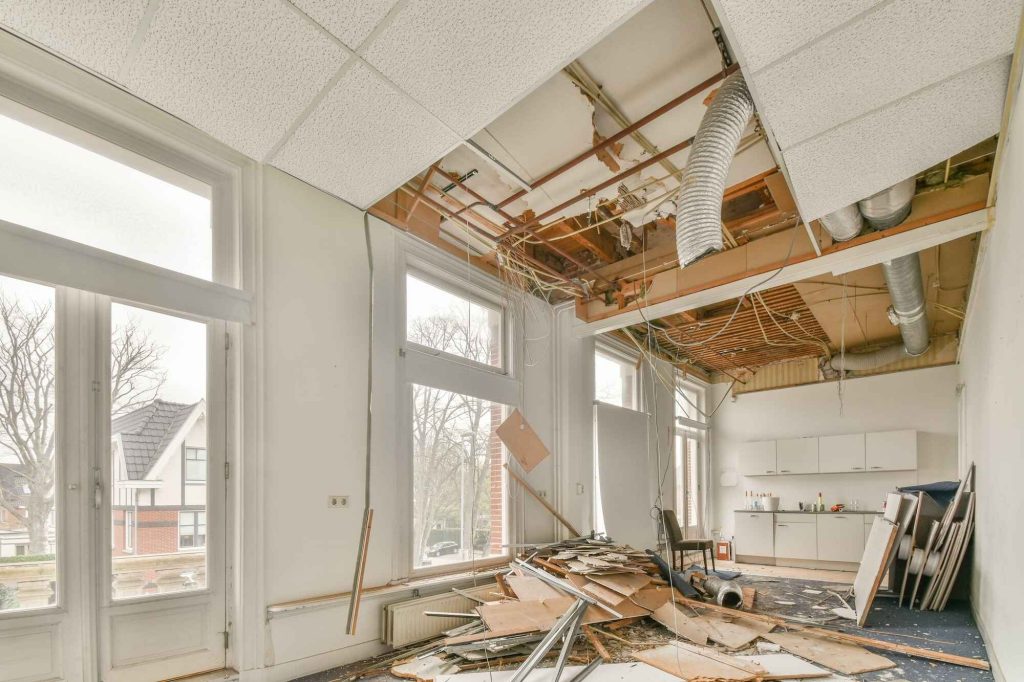We get this question often — does asbestos have a smell? Asbestos is a mysterious material. Colorless, odorless, unable to be felt or seen, it almost feels like an imaginary substance, both revered for its fireproofing properties and reviled for its harmful side effects.
So, we’ve answered your question already: asbestos doesn’t have a smell. But that’s just the first step if you suspect you have asbestos in your home or facility.
What is Asbestos?
First things first: know thy enemy. Asbestos is a naturally occurring mineral with long and thin fibrous crystals. It has excellent insulating, fireproofing, and thermal properties. Because of this, it was popular as building material from 1940-1970, until the discovery of its adverse health effects led to its ban.
While it’s not used in any more building projects in the U.S.A., older buildings still contain asbestos. It can be found in many different areas and materials:
- Plaster and drywall
- Popcorn ceilings and ceiling tiles
- Floor tiles and mastic
- Joint compound
- Insulation
How to Detect Asbestos
Detecting asbestos in your space can be a challenge because it’s pretty much invisible. If your building or home was constructed in the ‘30s through ‘80s, it’s a good idea to have a qualified laboratory test a sample before you do any demolitions or remodeling work.
Some common asbestos-containing materials are:
- Tiles, usually (but not only) 9×9 with no grout lines.
- Black mastic adhering the tile or other flooring to the ground.
- Compound on the ceiling in a popcorn (aka a popcorn ceiling) or other textures.
Asbestos Spills
When you suspect asbestos is in a surface mid-project, it’s best to halt and get a test before proceeding. Being cautious can save you from an asbestos spill (aka, a large amount of asbestos is released). Because asbestos fiber is extremely lightweight and undetectable to the human eye, it can get into the air easily without notice. A site contaminated by asbestos fibers can be dangerous for days: asbestos fibers can stay in the air for 72 hours, and if the dust is disturbed then there’s still a risk of exposure. When this happens, it contaminates entire sites, and is much more difficult to remove.
Better be safe than sorry — consult a professional before you start demo work!
Asbestos Abatement Options
There’s no safe level of exposure to asbestos, even though adverse effects from exposure take a long time to manifest. This is because asbestos builds up in the lungs over time as the lightweight fibers settle into tissue. While detecting asbestos in your home or business is worrying, don’t panic. Intact asbestos-containing materials (ACMs) don’t pose as significant a risk, since their fibers are not airborne yet. You are likely not in danger if you take proper precautions and work with professionals.
The best way to prevent asbestos spills is removal, also called asbestos abatement. A professional will contain the job site, carefully remove all the materials containing asbestos, and dispose of them properly. While slightly more expensive than encapsulation, this is the safest way to ensure an asbestos-free environment, and the only one that ensures asbestos won’t be a continued problem in the future.
Encapsulation is a method where intact asbestos is carefully contained and sealed in place. This prevents fibers from becoming airborne. This is only an option for asbestos that has not been disturbed, and does not protect from exposure in the case of a fire or flood that would disturb the encapsulation.
Learn More About Asbestos Removal
You can’t smell asbestos — but that doesn’t mean it’s not there. Learn more about our asbestos removal services with a fully licensed and insured team if you suspect asbestos in your building.
Get in touch for an estimate today. Mile High Environmental Services is your trusted asbestos abatement team. Our professionals boast over 40 years of combined experience, and have safely removed asbestos from homes, businesses, and even military bases across Colorado. If your home has tested positive for asbestos, call us today!


